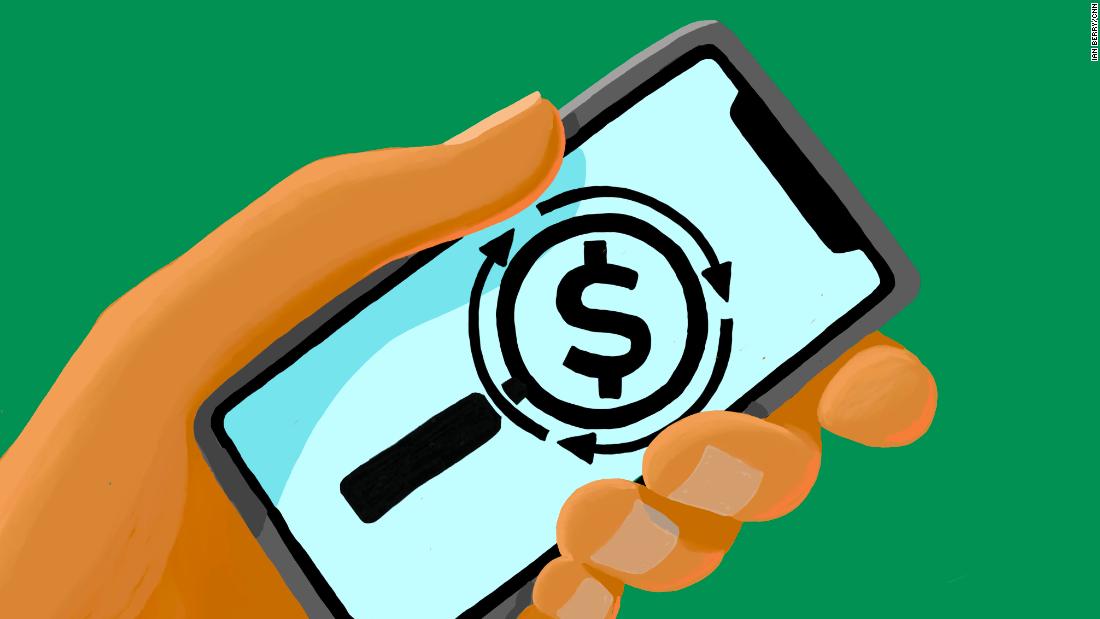How to figure out where all your money is going
That means making a finances. No one loves listening to the dreaded ‘B’ phrase, however maintaining a operating tab of your every day bills in your head in all probability is not reducing it.
“People think they are spending less than they actually are,” stated Madison Sharick, supervisor of monetary planning at PNC Investments.
Taking an advert hoc method to budgeting can depart you within the gap on the finish of the month, shortchanging your financial savings and pushing you into debt.
But do not consider a finances as a burden, beneficial Tiffany Aliche, founder of non-public finance web site The Budgetnista and creator of upcoming e-book “Get Good with Money.” Instead, consider it as a means to obtain your monetary targets. “Your budget creates an environment to have the things you want in a way that is sustainable,” she stated.
And making a system to observe your bills would not have to really feel like a chore. Just discover a technique that works finest for you.
If you need to do the heavy lifting
Whether it is with pen and paper or an Excel spreadsheet, monitoring all your spending and incoming money for at the least a month supplies an in depth log of your monetary habits and makes you extra conscious of them.
The key is to be trustworthy and thorough with your monitoring — sure, that cup of espresso wants to be famous. As does that birthday card for your mother. At the top of the month, you’ll have a line-by-line accounting of your funds supplying you with a transparent image of how a lot you’re spending and saving.
To assist categorize spending, Aliche locations a “B” subsequent to any payments which are fastened like hire or mortgage funds, and a “UB” for “usage bills” is positioned on bills that may fluctuate, like utility payments. She locations a “C” subsequent to expenditures which are a alternative (and are the best to reduce on, like consuming out or leisure).
The draw back: This technique might be time-consuming and may really feel tedious.
If you swipe all the time
If pen and paper aren’t your factor, otherwise you’re simply not diligent sufficient to sustain with all your purchases by hand, know-how may help observe and categorize your spending for you.
Various apps and web sites like Mint or PocketGuard will sync with your accounts to create spending stories. These instruments work finest if nearly all of your spending is completed by way of bank cards and digital purchases.
Some bank card suppliers additionally supply breakdowns of your spending to provide you with a way of where your money is going, however they’re often restricted to transactions you made with that account.
The draw back: Tracking software program tends to be backward-looking, monitoring what you have already spent, which will not assist stop overspending.
You like to have guidelines to comply with
Am I saving sufficient? Where can I reduce?
Now that you recognize where you have been placing your money, perhaps you want some assist figuring out where it ought to be going.
The 50/30/20 finances supplies a suggestion on how to divide your paycheck: 50% ought to go to required prices (for instance: housing, groceries, utility payments) 30% to discretionary spending (journey, leisure, subscriptions, and many others.) and 20% to financial savings and debt.
The draw back: This technique might be exhausting to comply with for folks in excessive cost-of-living areas — where housing prices eat up a a lot bigger portion of a finances — or for these nearing retirement who might have to double down on financial savings.
If you are an excessive money supervisor… or aspire to be
Once you have paid all your payments, spent on your needs and put money towards financial savings, you would possibly nonetheless have some left over. Money left floating round in your checking account and not using a designated goal usually finally ends up being spent on luxuries and impulse buys.
That’s not nice.
A zero-sum finances helps keep away from that drawback by accounting for each greenback earlier than you earn it. So you begin with your earnings after which subtract all your bills for the month with the objective of hitting zero. Expenses embody every thing you spend money on, together with housing, meals, financial savings and investments.
A preferred zero-sum system is YNAB (You Need a Budget). The software program will allocate your earnings to cowl all your bills, set targets and observe your progress. EveryDollar from private finance knowledgeable Dave Ramsey is one other instrument that makes use of the zero-sum technique to allocate funds.
The draw back: This method might be time-consuming and exhausting to comply with if your earnings incessantly fluctuates.
If you want strict self-discipline
Having a visible reminder of where your money is going may help rein in overspending.
First, figure out your take-home pay for a month (or pay interval) after which subtract any bills that may’t be paid in money: issues like, housing, financial savings and utilities (automate these funds if doable).
The leftover funds are what you’ve left to spend on every thing else in your finances. Determine how a lot you’ll be able to spend in every class (groceries, gasoline, leisure) after which put money for every designated quantity into an envelope labeled with what it may be spent on.
Once the envelope is empty, no extra spending in that class for the month.
If you don’t need to take care of bodily envelopes full of money, apps like Goodbudget and Mvelopes enable you to create digital envelopes to assist observe spending.
The draw back: This old-school technique requires numerous money and journeys to the ATM and might be exhausting for households to execute collectively.




